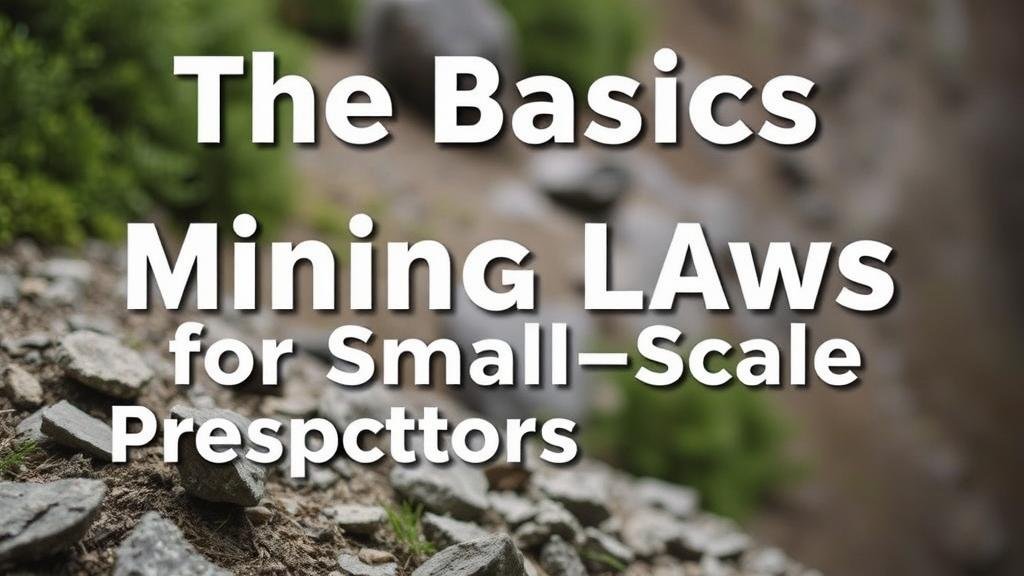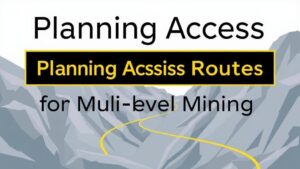The Basics of Federal Mining Laws for Small-Scale Prospectors
The Basics of Federal Mining Laws for Small-Scale Prospectors
Mining has been a vital part of the American economy, particularly in resource-rich areas. For small-scale prospectors, understanding federal mining laws is crucial not only for legal compliance but also for ensuring sustainable and ethical practices. This article provides an overview of fundamental federal regulations governing mining activities, particularly those pertinent to small-scale operations.
Overview of Federal Mining Laws
The primary body of law governing mining activities in the United States is the General Mining Act of 1872, which established the framework for mineral exploration and extraction on federal lands. Act allows U.S. citizens to explore for mineral deposits, stake claims, and mine them under specific conditions. While much has changed since its inception, this law remains foundational for prospectors today.
- Claims and Ownership: Small-scale prospectors can stake claims on certain federal lands if they are seeking locatable minerals like gold, silver, and copper.
- Compliance Requirements: Prospectors must comply with local, state, and federal regulations to legally operate.
Types of Mining Claims
In the context of federal mining laws, there are primarily three types of claims that small-scale prospectors can acquire:
- Locatable Mineral Claims: These apply to minerals that are subject to the General Mining Act, such as precious metals. Prospective miners must file a notice of intention to locate a mining claim with the Bureau of Land Management (BLM).
- Leasable Mineral Claims: Some minerals require a lease rather than a claim. This includes resources like oil and gas, where the Bureau of Ocean Energy Management (BOEM) oversees leasing activities.
- Salable Mineral Claims: These refer to materials like sand and gravel, which can be obtained through a permit rather than a claim.
Staking a Claim
Staking a mining claim involves several steps, which include:
- Research: Prospective miners should research land availability through the BLM to avoid staking claims on locations that are restricted or non-mineral reserving.
- Physical Markings: After determining a stake location, physical markers must be placed to denote the claim boundaries clearly.
- Filing: A locator must file the claim with the appropriate federal agencies, typically within 90 days of staking.
Failure to complete these steps can result in losing the claim. For example, the case of United States v. Locke (2004) highlights the importance of timely filing and regulation compliance, which could invalidate claims.
Regulatory Compliance
Once a claim is staked, prospectors are required to adhere to several regulations. Compliance is essential, as the federal government prioritizes environmental protection and sustainable mining practices.
- Environmental Compliance: Operators must comply with the National Environmental Policy Act (NEPA), often requiring environmental assessments before beginning operations.
- Reclamation Obligations: Small-scale miners are responsible for reclaiming the land after mining activities are concluded to prevent environmental degradation.
Real-World Applications
Understanding these laws translates into practical benefits for small-scale prospectors. For example, small mining operations have succeeded in leveraging low-impact techniques such as panning and sluicing that comply with federal regulations. e methods not only reduce environmental impact but also align with community standards and ethical mining practices.
Plus, organizations like the American Prospectors & Miners Association (APMA) provide resources and educational opportunities specifically designed to help small-scale miners navigate complex regulations and enhance their compliance and operational efficiency.
Takeaways for Small-Scale Prospectors
In summary, the landscape of federal mining laws is essential for small-scale prospectors looking to explore and extract mineral deposits legally and sustainably. Here are actionable takeaways:
- Familiarize yourself with key regulations, especially the General Mining Act of 1872.
- Engage in thorough research before staking a claim to ensure compliance with federal and state laws.
- Adhere to environmental laws and reclamation requirements to minimize ecological impact and maintain the integrity of the operation.
By understanding these fundamental laws and regulations, small-scale prospectors can not only safeguard their investments but also contribute positively to the environment and the mining community at large.



